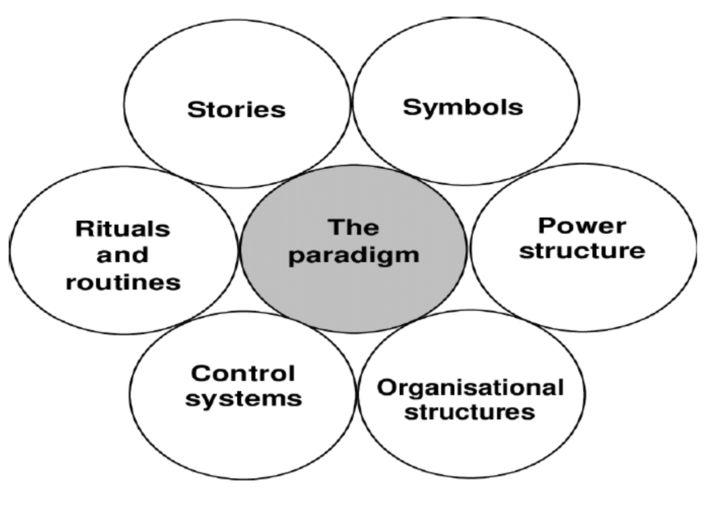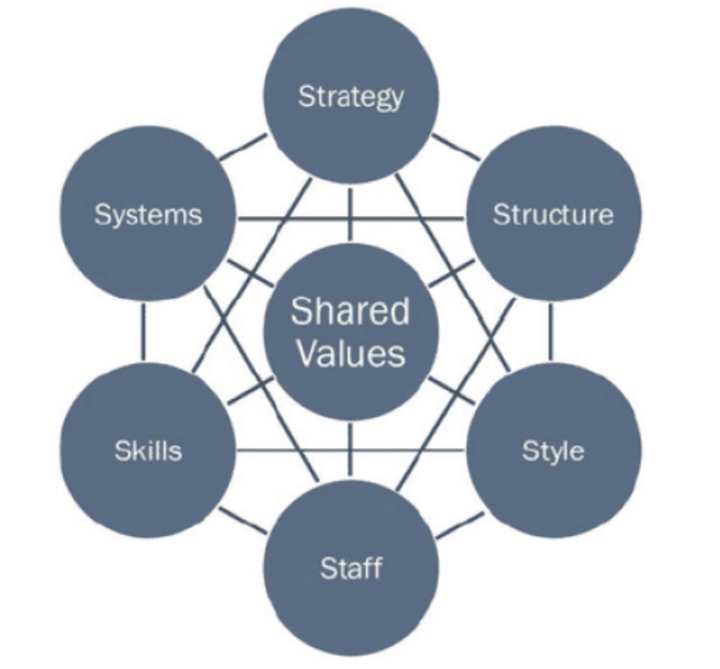Organisational Behavior Study Notes
By BYJU'S Exam Prep
Updated on: September 11th, 2023

Organisational Behavior Study Notes– Organisational Behavior is a vital contributor to corporate success because it has a far-reaching influence on the behaviours and actions of the employees. Simply a culture means how people are different in a particular situation. This is who we are. This is what we do. This is what we stand for.
Culture is actually the unique identity of the organisation. According to handy, behaviour means the way we do things around here.
behavior = belief + knowledge + attitudes + norms + customs
Levels of behaviour
Culture exists at three levels
- Artefacts: Things that can be seen heard and witnessed. (Eg: dress codes, patterns of behaviour, office layout)
- Espoused values: These can be identified from stories and the opinions of those within the organisation. (Eg: language, behaviour)
- Basic assumptions: These beliefs are so deeply embedded in a culture that members are no longer deliberately aware of them. (Eg: Beliefs on environmental issues, How people should be treated etc.)
Organisational Iceberg: The idea of hidden elements in culture is often referred to as the organisational iceberg. (Think of titanic). The iceberg describes two levels at which culture operates:
- Formal aspects: These aspects are visible, i.e., above the water. These include goals, technology, procedures, structure, and skills.
- Behavioural aspects: These aspects are hidden, i.e., below the water. These include attitudes, style, communication patterns, values, feelings, beliefs.
Advantages of having a strong behaviour
- Ensure smooth communication in the organisation
- Better coordination within the organisation
- Provide a framework of social individuality and a sense of belonging
- Shrink differences amongst the members of the organisation
- Strengthen the dominant values and attitudes
- Standardise behaviour and norms among the members of the organisation
- Diminish some of the perceptual differences among the people within the organisation
- Reflect the philosophy and values of the organisation’s founder or group
- Affect the organisation’s strategy and capability to change.
| BBA Entrance Exams | |
| SET BBA | IPMAT |
| GGSIPU CET | JIPMAT |
| DU JAT | UGAT |
| NPAT | NCHMCT JEE |
Disadvantages of having a strong behaviour
- Strong cultures are difficult to change, beliefs which underpin culture can be deep-rooted
- Strong cultures may have constrained views which could affect the organisation’s ability or desire to learn new skills
- A strong culture that is positive can enhance the performance of the organisation, but a strong culture that is negative can have the opposite effect
- Conflicts may arise, when two strong cultures come into contact, eg. In a merger
- A strong culture may not always be suitable for the environment
Click here to download Note’s PDF
Influences on behavior
- Size
- Technology
- Diversity
- History
- Ownership
- The degree of individual initiative
- The degree of risk tolerance
- Clarity of direction
- The degree of integration between groups
- The reward system
- Conflict tolerance
- Communication patterns
- The kind of people employed
The cultural web framework (Johnson and Scholes): Johnson and Scholes identified a number of elements that can be used to describe or influence organisational culture. He placed the paradigm at the heart of the cultural web framework.

The paradigm is what the organisation is about; what it does, its mission, its values. This paradigm is influenced by the following six factors:
- Stories and myths – the past events people talked about, inside and outside the company
- Rituals and routines – the daily behaviour and actions of people
- Symbols – these include the organisation’s logo, designs etc
- Organisational structures- reporting lines, hierarchies and the way that workflows through the business
- Control systems – the processes in place to monitor what is going on
- Power structures – which makes the decision in the organisation or board
The McKinsey 7-S model: This model highlights the ‘hard’ and ‘soft’ aspects of the organisation, which can influence the culture. The hard elements are more visible from outside the organisation. Soft elements are usually only completely understood from within the organisation.

The hard elements are
- Strategy – the actions which are planned in response to environmental changes
- Structure – how people and tasks are organised
- Systems – the information flows and processes of an organisation
The soft elements are shared values (superordinate goals) – these identifies what the organisation believes in and stands for
- Skills – capabilities and distinct competencies
- Style – relates to the leadership and management styles
- Staff – numbers and types of personnel within the organisation
Models of categorising culture
Handys cultural types
- Power culture – here the ego of a key person comes first
- Role culture – here the job description of the actor comes first
- Task culture – getting the job done right and on time comes first
- Person culture – here actors fulfil personal goals and objectives whether or not they are congruent with those of the organisation
National behaviour
New millennium business organisations are going global. So it is essential for a company to understand the different cultures prevailing in different countries. Managing in different cultures is vital for corporate success.
Hofsted (1990) developed a model to explain national differences by identifying five key dimensions along which national cultures. Every strategist should consider these dimensions and find the feature of the operating country.
1. Power distance
- The dimension covers how much of society accepts the unequal distribution of power
- High power distance means people accept inequality in power
- Low power distance means people do not accept inequality in power
2. Uncertainty avoidance
- It is the degree to which members of society feel uncomfortable with risk, uncertainty and ambiguity and feel threatened by unusual situations
- High uncertainty avoidance means risk-taking is discouraged people are uncomfortable with risk, uncertainty and ambiguity and feel threatened by unusual situations
- Low uncertainty avoidance means high tolerance people are comfortable with risk, uncertainty and ambiguity and feel threatened by unusual situations
3. Individualism and collectivism
- Individualism means that individuals are expected to take care of themselves
- Collectivism means that individuals look after one another and organisations protect their member’s interests
4. Masculinity or feminity
- Masculinity relates to the degree to which masculine values predominate. E.g., achievement, heroism, assertiveness
- Feminine orientation values relationships, caring for the weak and quality of life
5. Time orientation
- Long term orientation means valuing tradition, loyalty, education and training
- Short term orientation means valuing fast promotions and quick profits
==========================


